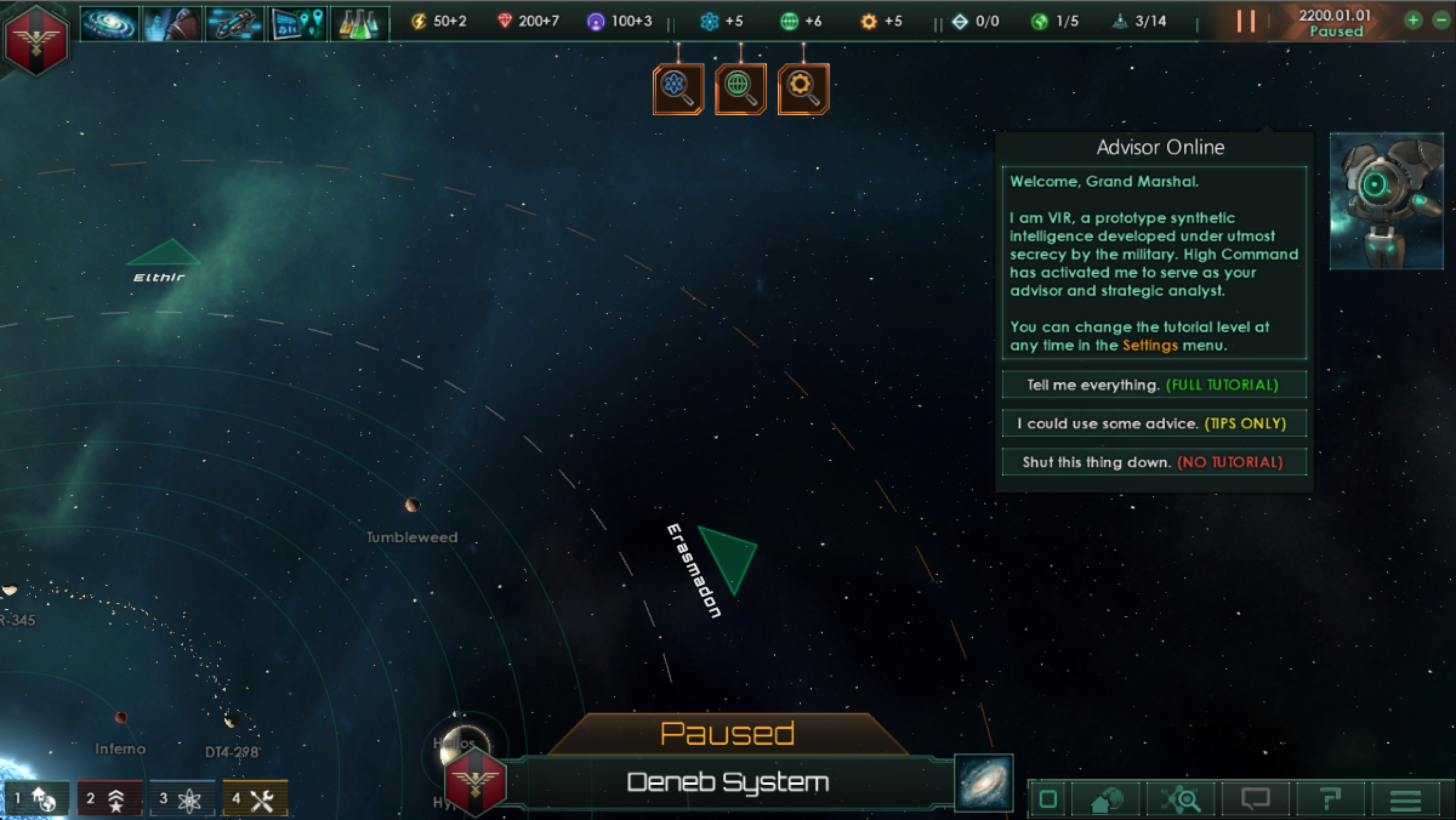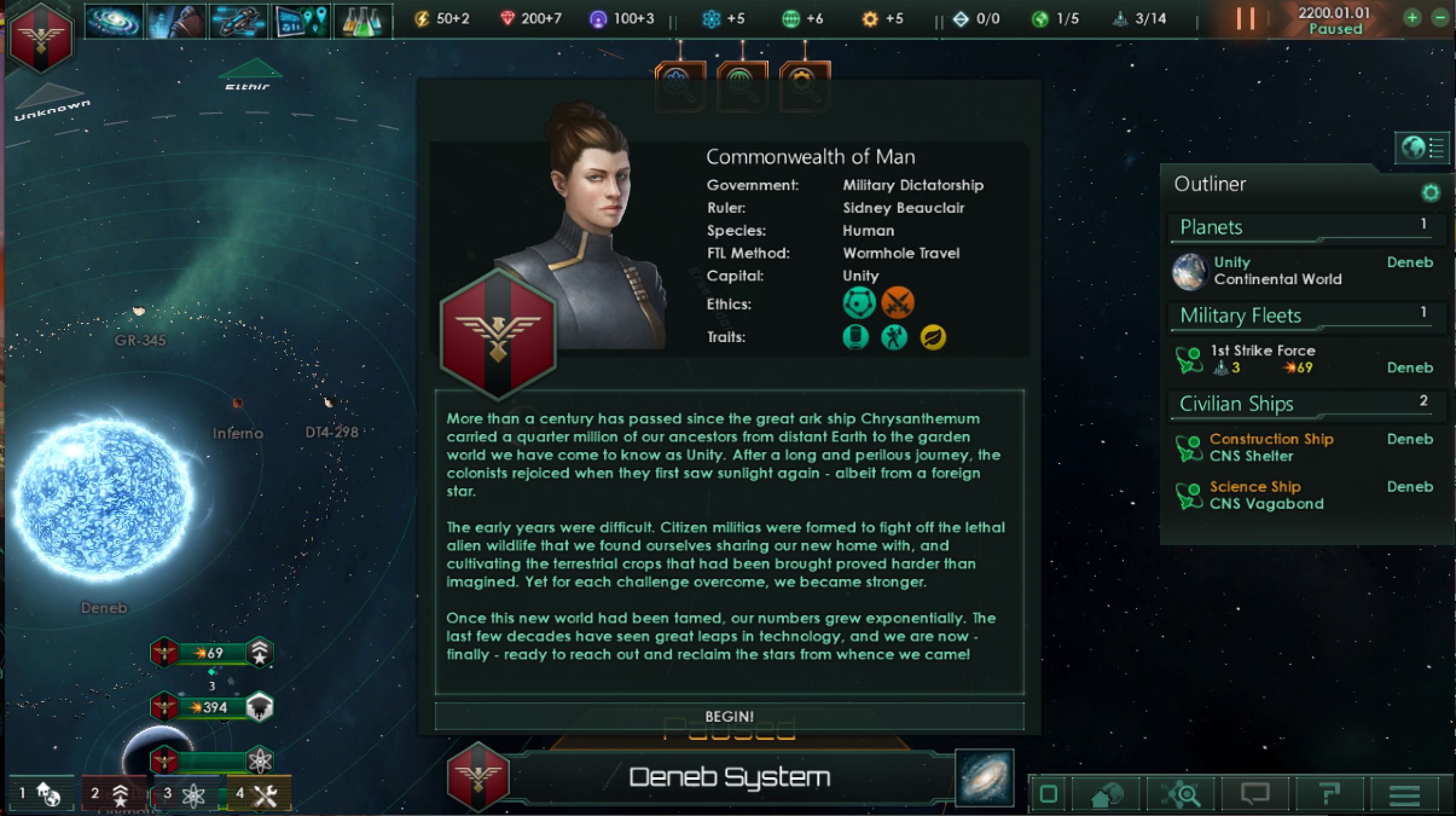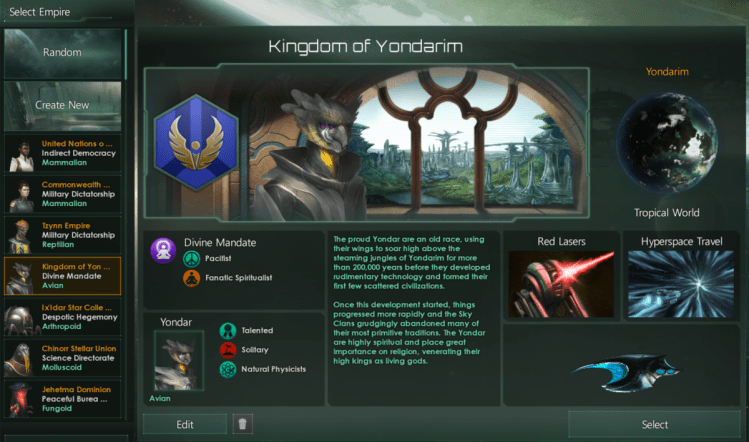Stellaris’ biggest strength doesn’t appear to be its beautiful graphics, its expansive universe, its seemingly endless variety, or its fun pace of gameplay as you explore and build out and conquer your galaxy.
Its menus take that prize.
Paradox Interactive has built a reputation for thorny, twisty, impossibly complicated grand strategy games, such as Europa Universalis and Crusader Kings. The sim Cities: Skylines, from the appropriately named developer Colossal Order, was its most accessible release in years.
So when I heard Paradox was venturing into space with Stellaris and that your universe could host a thousand star systems, each with its own planets and factions and archaeology and tech and … I took a deep breath before I buckled down to play. I didn’t need to worry; Stellaris immediately surprised me.

Above: A truly helpful tutorial walks beginners through the steps of using Stellaris using a variety of fun quests.
What you’ll like (so far)
A grand strategy game that makes it easy for you to manage
First, my bias: Given a choice between a standard 4X strategy game that invites you to eXplore, eXpand, eXploit, and eXterminate, and a grand strategy title that forces you to micromanage a thousand different sliders and activities and diplomatic relations and acquisition of a gajillion materials, all as part of a grand plan to take over something, somewhere, I tend to lean toward the former.
I like the “you’re starting from scratch” feel of most 4X titles and the feeling that if your strategy sucks, it’s all short term — making it easy to redirect and get back on track. But after playing through more than 50 hours of Stellaris, I’m starting to think my complaint with earlier grand strategy games didn’t stem from their finicky, thoughtful nature. It came from their user interface.
This game makes it easy — fun, even — to keep track of what’s going on. A handy “outliner” menu at the side of the screen makes it helps you zip to where the action is, and the screens that track what you’re doing in different locations show obvious thought and intentional design.
In a game where clicky-clicky forms the heart of the real-time gameplay, it felt completely refreshing for my little command cockpit to feel so intuitive, easy to navigate, and pretty to look at. It was like settling into the pilot’s seat of a luxury jet and realizing that I immediately knew all the controls, with everything placed in easy reach and chromed to make it pretty.

Above: See the Outliner menu at right? That’ll become your best friend during Stellaris gameplay.
And boy, does this game deliver pretty pictures
Watching and listening to Stellaris creates a joyous experience. Menus aren’t its only aspect that looks appealing: The star systems themselves to the tiles you control or the planets’ surfaces show the results of careful design and a smooth artistic touch, and I stopped plenty of times to just admire how something as simple as the “travel trails” showing a ship’s trajectory were built.
Space battles, while offering a little less control than I might have liked (more on that later), look awesome, every time. Tiny ships, darting everywhere, firing salvos of light — if you could picture holding the universe in your hands, each star a tiny pinprick of light, you’ve got a good idea of how Stellaris’ graphics and soaring soundtrack make you feel.
The music accompanying the view delivers a first-rate experience, and I often left the game running (but at menus, for fear of disaster — again, more on that in a second) while I did other things just to let it warble its orchestral and New Age white noise. During the far-too-infrequent combat sessions, I would have liked some marches or other more violent music-to-blow-things-up-by, but in general it offered a space-y vibe.

Above: Combat looks great up close like this — or from across the system. Also, blue lasers are definitely better than red ones.
In Stellaris, it pays to create your own race
So far, Stellaris has mostly hit the sweet spot between standard 4X gameplay and grand strategy. The action moves in real time, rather than in turns, so it gives you a sense of urgency and flow. You can control the speed that things move, but you won’t want to that often; speeding up the action means your to-do list piles up and can go south pretty quickly. It’s a testament to the pacing that you won’t want to all that often.
You start by choosing a faction from the six provided (a mix of human and avian and bug-like species with different governmental structures and technology) or by making your own. With other strategy games of this type, I would advise against making your own faction, as building your faction rapidly becomes tedious and makes little difference to the gameplay.
Not so in Stellaris. Here, the combinations of abilities, personality traits, and tech have a huge impact on how you play and evolve your budding society many hours down the road. Do you ally with other races, or do you conquer them or enslave them? What you choose on this screen will help decide.

